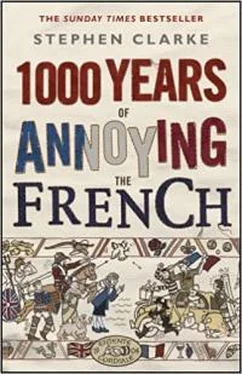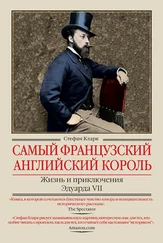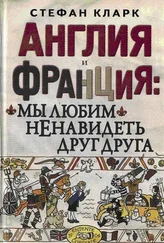Стефан Кларк - 1000 Years of Annoying the French
Здесь есть возможность читать онлайн «Стефан Кларк - 1000 Years of Annoying the French» весь текст электронной книги совершенно бесплатно (целиком полную версию без сокращений). В некоторых случаях можно слушать аудио, скачать через торрент в формате fb2 и присутствует краткое содержание. ISBN: , Издательство: Transworld Digital, Жанр: Старинная литература, на английском языке. Описание произведения, (предисловие) а так же отзывы посетителей доступны на портале библиотеки ЛибКат.
- Название:1000 Years of Annoying the French
- Автор:
- Издательство:Transworld Digital
- Жанр:
- Год:неизвестен
- ISBN:9781407067629
- Рейтинг книги:3 / 5. Голосов: 1
-
Избранное:Добавить в избранное
- Отзывы:
-
Ваша оценка:
- 60
- 1
- 2
- 3
- 4
- 5
1000 Years of Annoying the French: краткое содержание, описание и аннотация
Предлагаем к чтению аннотацию, описание, краткое содержание или предисловие (зависит от того, что написал сам автор книги «1000 Years of Annoying the French»). Если вы не нашли необходимую информацию о книге — напишите в комментариях, мы постараемся отыскать её.
1000 Years of Annoying the French — читать онлайн бесплатно полную книгу (весь текст) целиком
Ниже представлен текст книги, разбитый по страницам. Система сохранения места последней прочитанной страницы, позволяет с удобством читать онлайн бесплатно книгу «1000 Years of Annoying the French», без необходимости каждый раз заново искать на чём Вы остановились. Поставьте закладку, и сможете в любой момент перейти на страницу, на которой закончили чтение.
Интервал:
Закладка:
Harold met Harald at Stamford Bridge on 25 September by the river Derwent near York. The battle, it is said, got off to a bad start for the English when a single Viking stubbornly blocked the entrance to the bridge, killing forty or so of Harold’s troops as they tried to cross. Eventually, an English soldier paddled downriver in a barrel, stopped under the bridge, and, thrusting his spear upwards between the planks, spiked the Viking in the groin. Not very sporting, perhaps, but technically the guy was holding up play.
The ensuing battle was horrifically bloody, and cost the lives of many of Harold’s best men, but at the end of it, he had effectively smashed the enemy once and for all. Chroniclers record that the fleeing Viking survivors filled only two dozen of the 300 longships that they had arrived in.
After all this exertion, Harold’s remaining troops then had to march south again – yet another week’s hard slog – to face William, who was living the good life, robbing helpless Sussex peasants and having beach barbecues with the fruits of his pillaging, as well as the meat and vegetables.
The Normans had another advantage over Harold’s exhausted army. The Bayeux Tapestry devotes about a quarter of its 70 metres to pictures of Norman knights charging around the Hastings district on their horses. Harold’s soldiers fought on foot. The only horses they possessed were little Shetland-type ponies used as beasts of burden, which would have been no use in battle except to distract an enemy by making him laugh. The Normans, on the other hand, were trained in cavalry warfare, and arrived with shiploads of sleek battle horses that had had plenty of time to get over their seasickness.
The tapestry also makes much of the shower of arrows that hailed down on Harold, one of them eventually finding its mark and killing him. A frieze covering the best part of four panels shows a long line of Norman archers supporting the cavalry with their fire, while small groups of brave Anglo-Saxons, sometimes without armour or shields, defend their hilltop. The Anglo-Saxons didn’t generally use archers en masse – they believed in the concept of man against man, axe against axe, two warriors face to face in mortal combat. 7William would have none of this – it was much less tiring and risky to pincushion the Anglo-Saxons with arrows and then trample the survivors under the hooves of his cavalry.
In short, the Battle of Hastings was like two boxers meeting to contest the European Heavyweight crown, when one of them has just been forced to run a marathon and go fifteen rounds with the World Champion while the other was lounging about at the pool and doing some light sparring against schoolboys. And no sooner have the boxers climbed into the ring than one of them pulls out a grenade launcher and blows his opponent to smithereens.
Not, of course, that one would want to use all this as an excuse for an English defeat.
As it was, against all the odds, Harold came astonishingly close to winning the battle. His men may have been tired, but they were determined to kick these new invaders off their land. The Norman chronicler Wace says that when the fighting began, the Normans called out, ‘God be with us!’ to which the Saxons replied, ‘Get out!’ Though, being Anglo-Saxons, their actual words were probably a lot more colourful.
At first, things didn’t go William’s way. He had numerical superiority – around 8,000 troops compared to Harold’s 7,500 – but the Anglo-Saxons had secured an advantageous position on a hilltop. The first wave of Norman arrows plunked harmlessly into a wall of shields, and the follow-up infantry attack was bounced back down the hill, suffering horrendous casualties. Even the first cavalry charge failed, with the Norman horses shying away from the howling mob of axe-wielding Anglo-Saxons. William’s own mount was felled under him, and as soon as he got to his feet he had to lift his helmet and show his face to stop his men giving in to panic.
It was at this point that, according to pro-Norman legend, William pulled off his master-stroke. Seeing that large numbers of Anglo-Saxons had charged down the hill after the retreating cavalrymen, the Norman is said to have staged a fake, full-scale withdrawal, tempting even more of his enemies to break ranks and leave the hilltop. As soon as the Anglo-Saxons were exposed on open ground, the cavalry turned and cut them down.
There is, however, a slightly more credible explanation for what happened. True, a large number of Harold’s men did career down the hill, hacking away at fleeing Normans, and they did a great deal of damage. One section of William’s army, mostly made up of Bretons, retreated in disarray, forcing their Norman colleagues to withdraw in parallel to stop the Anglo-Saxons wheeling around and surrounding them. And this seems to have given William an idea. With so many Anglo-Saxons running about on the lower ground, the battery of shields on the hilltop was thinner; also, Harold’s personal bodyguard, the formidable housecarls, bunched together behind this front line, were more exposed. So William told his archers to fire higher, over the shields and into the housecarls. He also got his infantry and cavalry to charge again, and this time they broke through. The faithful housecarls were slaughtered to a man, and Harold himself fell, either blinded by an arrow or cut down by Norman swords. Beside the famous picture of the knight with an arrow in the eye, the tapestry informs us that ‘Harold Rex Interfectus Est’ – ‘Harold the King is killed’.
Which is bizarre. It is highly doubtful that William would have used that wording, or ordered someone else to use it for him. Chroniclers of the time were notoriously partisan – a more likely Norman commentary would have been something along the lines of: ‘The treacherous usurper Harold meets the end he deserves, the Lord thrusting an arrow through his most tender parts as a punishment for trying to rob the noble William of his just title.’ This would have been a bit too long for inclusion in the tapestry, of course, but at the very least, William, who had always considered himself as the rightful king and Harold as a usurper, would have ordered the ‘Rex’ to be omitted or removed.
Yet more evidence that someone was trying to annoy William personally, or the Normans in general.
Step 4: The call of booty
Another feature of the tapestry is that it refers to the invaders not as ‘Normanni’ but as ‘Franci’. This confusion was nothing new. Long before William’s invasion, Earl Godwin had warned that Edward the Confessor’s ‘French’ cronies had too much influence at court. The epithet was, however, both geographically and ethnically misleading, and Godwin and co. were probably just being dismissively vague, rather like the present-day French when they want to moan about something that the English-speaking world has done. Forgetting the existence of Celts, African-Americans and many other branches of the Anglophone world, the French will blame ‘les Anglo-Saxons’ for whatever is irking them. 8
When the tapestry talks about ‘Franci’, though, the name is slightly more accurate, because William’s invading army was not made up entirely of his faithful Norman clansmen. While planning his Conquest, William had sent out the word that there was lots of booty to be had. This promise attracted a mixed band of Normans, Bretons, Boulonnais, Angevins (people from Boulogne and Anjou) and other ‘French’ mercenaries, all thirsty for money and sex with English women – in short, much the same motives that have always brought young Frenchmen over to London.
This does not mean, however, that it was a ‘French’ invasion. For a start, neither the Normans nor the Bretons were Franks – they were Vikings and Celts. William’s reputation as a provider of booty (and bootie) was so solid that fighters even came from as far away as the Norman colony in Italy to join him. And, most importantly, it was not the King of the Franks (then Philippe I) who launched the Norman Conquest. The Duke of Normandy was, in strict feudal terms, Philippe I’s vassal, meaning that William owed allegiance to him. But William was very much his own man and the attack on England was, politically, a purely Norman one, aimed at extending William’s personal power across the Channel and grabbing land for himself and his kinsmen. Close associates of his provided ships and soldiers in exchange for promises of land, and some of the funding came from Norman bishops and abbots, who realized that, should William succeed, there might be the odd silk cassock and/or brand-new cathedral in it for them. Every successful sword stroke at Hastings would have sounded to William’s backers like a loud ‘ker-ching’.
Читать дальшеИнтервал:
Закладка:
Похожие книги на «1000 Years of Annoying the French»
Представляем Вашему вниманию похожие книги на «1000 Years of Annoying the French» списком для выбора. Мы отобрали схожую по названию и смыслу литературу в надежде предоставить читателям больше вариантов отыскать новые, интересные, ещё непрочитанные произведения.
Обсуждение, отзывы о книге «1000 Years of Annoying the French» и просто собственные мнения читателей. Оставьте ваши комментарии, напишите, что Вы думаете о произведении, его смысле или главных героях. Укажите что конкретно понравилось, а что нет, и почему Вы так считаете.












